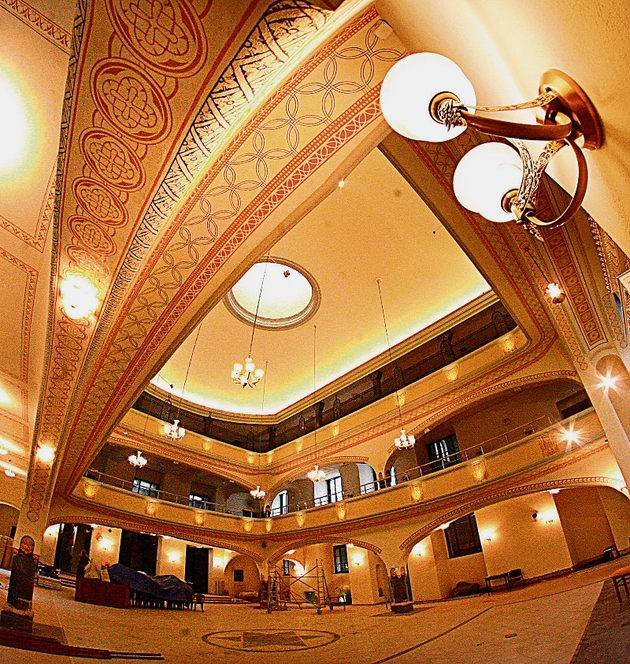White Stork Synagogue, restored facade (Photo: Bente Kahan Foundation)
White Stork Synagogue before restoration. (Photo: Bente Kahan Foundation)
By Ruth Ellen Gruber
The Wroclaw, Poland-based Norwegian singer Bente Kahan reports that the restoration of the historic White Stork Synagogue in Wroclaw is nearly complete, and that the synagogue will be rededicated next May 6.
As I r
eported on this blog from Wroclaw last year, Kahan set up a foundation in 2006 (
The Bente Kahan Foundation) whose main aim is the restoration of the synagogue and creation of a modern Jewish Culture Center and Jewish Museum there. The Center has already been operating in the partially-restored synagogue, organizing, the web site states: "exhibits, film screenings, workshops, lectures, concerts and theatre performances. Included in their programs are also their own productions 'Wallstrasse 13' and 'Voices from Theresienstadt' featuring local actors and musicians, as well as 'Sing with us in Yiddish', a concert with children from Wroclaw."
The Bente Kahan Foundation, supported by the Municipality of Wroclaw and the Association of the Jewish Religious Communities in Poland has a clear vision of future functions of the synagogue. The Center for Jewish Culture and Education will strengthen the role of the temple as one of the most attractive spiritual centres in the country by opening its doors for concerts, shows, theatre, workshops, films, lectures seminaries and so on. This living Jewish heart in the centre of Europe will beat even stronger!
The creation of the modern Jewish Museum in Wroclaw (2012) will definitely help to reach that goal. The Museum will be located in the basement and on the balconies of the synagogue floors. The Staircases and the separate entry will enable free communication with the building without disturbing the sacral and cultural space of the temple. By using of modern 3D and holographic techniques, the museum will show the rich and unique world of the Silesian Jews and their thousand-years-old history. It will also be a place for exhibitions, lectures and workshops. The museum will become no just another tourist attraction but also an important link in the educational proces, especially in the context of young people.
Kahan has set up web site dedicated to the
synagogue and its restoration (only in Polish).
Interior before renovation. (Photo: Bente Kahan Foundation)
Interior after renovation (Photo: Bente Kahan Foundation)
Before World War II, Wroclaw, known in German as Breslau, was part of Germany and Germany's third-largest Jewish community. Originally inaugurated in 1829, the White Stork synagogue is an elegant neo-classical structure designed by Karl Ferdinand Langhans. (For a complete history of the building, click
HERE.) It is the only synagogue in the city to have survived the War and languished in disrepair for many years. It was returned to Jewish community ownership in the mid-1990s, after which sporadic restoration work was carried out. (A symbolic event in this process was the wedding there in 2000 of the American filmmakers Ellen Friedland and Curt Fissel, who run the documentary company
JEM/GLO.)
There is still a small Jewish community in Wroclaw, which uses a refurbished prayer room in the synagogue complex. A big
Jewish Culture Festival called Simcha takes place in Wroclaw each summer.
Photo (c) Ruth Ellen Gruber
Wroclaw also has two fascinating Jewish cemeteries.
The Old Jewish Cemetery, founded in 1856, is now maintained as a municipal Museum of Cemetery Art. Located on Slezna street, it has about 12,000 graves, including 300 elaborate monuments ranged around the walls. The earliest known Jewish gravestone in Poland, that of a David ben Shalom, who died in 1203, is conserved here. Notable people are buried here include the German Social Democratic leader Ferdinand LaSalle (1825-1864) and the parents of Edith Stein, a Jewish intellectual and convert to Catholicism who became a nun, was killed at Auschwitz and was canonized by Pope John Paul II.
Detail of a Tombstone in the Old Jewish Cemetery: a snake circling an hour glass. Photo (c) ruth Ellen Gruber

















